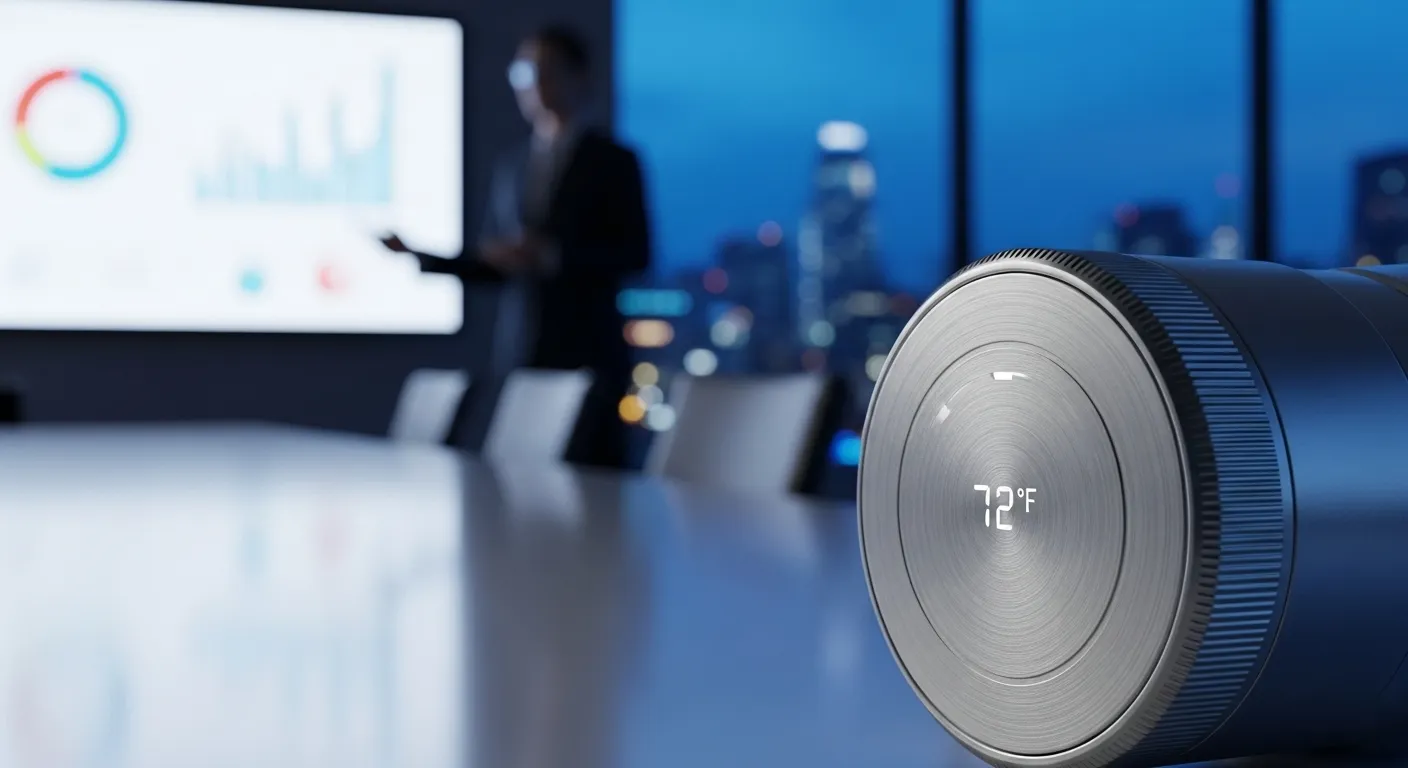
📚 Table of Contents
- Rule 1: Understand the Psychology of the Ping
- Rule 2: Curate Your Digital Environment Like a Pro
- Rule 3: Reclaim Your Physical Spaces and Time
- Rule 4: Practice with Real-World Scenarios
- Rule 5: Troubleshoot and Adapt with Self-Compassion
- Frequently Asked Questions About Notification Management
- My phone’s focus mode wants to share my status with others. What about my privacy?
- I work night shifts or have an irregular schedule. How can I adapt these sleep rules?
- How can I apply these rules to my children’s devices?
- My job requires me to be responsive and “always on.” What can I realistically do?
- Won’t turning off notifications make me less productive and out of the loop?
- Your First Steps to a Quieter Mind
A buzz from your pocket. A ping from your laptop. A small red circle on your screen. Each one is a tiny, digital tap on the shoulder, a bid for your most valuable resource: your attention. If you feel like you’re drowning in a sea of alerts, you are not alone. This feeling, often called notification overwhelm, is a defining challenge of our connected lives.
We are constantly pulled away from our work, our families, and even our own thoughts by an endless stream of updates. The promise of technology was to make us more efficient and connected, yet for many, it has created a state of perpetual distraction. The cost is high—fractured focus, diminished productivity, and a low-grade hum of anxiety that follows us throughout the day.
But what’s the alternative? Quitting technology altogether is not a realistic solution for most of us. Our phones are our maps, our calendars, our connection to loved ones, and our tools for work. The goal isn’t to abandon our devices, but to reclaim our relationship with them. It’s about shifting from being a reactive user, controlled by algorithms, to an intentional one, guided by your own priorities.
This guide offers a different path. It’s not about extreme digital detoxes or complicated productivity systems. It’s about establishing simple, sustainable boundaries. We’ll explore five straightforward rules for how to manage notifications effectively. These are not rigid commands, but gentle principles to help you create a digital environment that serves you, rather than drains you. Let’s begin the journey toward a quieter, more focused life, one notification at a time.
Rule 1: Understand the Psychology of the Ping
To effectively manage your notifications, you first have to understand why they are so powerful. Their hold on us isn’t a sign of personal weakness; it’s the result of sophisticated psychological engineering. App developers and tech companies have become masters of human attention, and the notification is one of their most effective tools.
At the heart of this is a concept from behavioral psychology known as a dopamine loop. Dopamine is a neurotransmitter in the brain associated with pleasure and reward. When we do something enjoyable, like eating a delicious meal or receiving a compliment, our brain releases a small amount of dopamine, which makes us want to repeat the behavior. Technology creators have learned to harness this natural system.
Think about a slot machine. The reason it’s so addictive is its use of variable rewards. You pull the lever, and you might win, or you might not. The uncertainty is what keeps you hooked. A notification on your phone works in precisely the same way. The sound or vibration creates a moment of anticipation. Is it an important email from your boss? A funny text from a friend? A “like” on your latest photo? Or is it just a promotional alert from a shopping app? You don’t know, and that very uncertainty triggers a dopamine response, compelling you to check. To learn more about the foundations of human behavior, the American Psychological Association (APA) is an excellent resource.
This cycle is particularly potent for adults living in busy urban environments. Your phone isn’t just for fun; it’s a command center. A notification could be a delivery driver arriving with your groceries, a critical update on public transit, a last-minute change to a meeting, or a message from your child’s school. This blurs the line between trivial and essential, teaching our brains that every single ping could be important. We become conditioned to respond immediately, fearing we might miss something crucial.
This constant state of alert readiness is mentally exhausting. It fractures our attention, making it nearly impossible to engage in deep, focused work. Every interruption, no matter how small, forces your brain to switch contexts. It takes time and energy to disengage from your task, process the notification, and then re-engage with what you were doing. Multiply that by dozens or even hundreds of times a day, and you have a recipe for burnout and persistent distraction.
Recognizing this dynamic is the first and most crucial step. You are not fighting a simple urge; you are up against a powerful, deeply ingrained feedback loop designed to capture and hold your attention. By understanding the mechanism, you can begin to dismantle it. The goal is to break the automatic stimulus-response cycle and replace it with conscious, intentional choice. You decide when and how you engage, not the app.

Rule 2: Curate Your Digital Environment Like a Pro
Think of your phone’s home screen and notification settings as your digital home. Right now, it might feel chaotic, like a house where anyone can walk in and shout at any time. The solution is to become a mindful digital architect. This rule is all about practical phone hacks and thoughtful notification management to build a calmer, more focused space.
Perform a Notification Triage
The single most effective action you can take is to audit your notifications app by app. This isn’t a quick fix; it’s a foundational reset. Set aside 15-20 minutes, open your phone’s settings, and go through the list of apps. For each one, decide which of three categories its notifications fall into.
This is the only bulleted list you’ll find here, designed for clarity:
• Category 1: Essential (Time-Sensitive & Personal). These are the alerts you truly need to see immediately. They are typically from other people and require a timely response. Think phone calls, text messages from close family and friends, calendar alerts for appointments, and two-factor authentication prompts. These are the only apps that should be allowed to send you instant, sound-on notifications.
• Category 2: Nice-to-Know (Batch Process). This category includes most of your other communications: work emails, direct messages on social media, group chat updates, and news headlines. These are things you want to know, but not right now. The key here is to turn off the audible and vibration alerts. Let them arrive silently, so you can check them on your own schedule. This is the essence of notification batching, which we’ll discuss more.
• Category 3: Noise (Turn Off Completely). This is the largest category. It includes promotional alerts from shopping apps, game notifications, reminders to use an app you haven’t opened in a while, and vague social media updates like “Someone you know posted a photo.” Be ruthless here. If a notification doesn’t directly inform or connect you in a meaningful way, turn it off. You will be surprised by how much digital noise you can eliminate.
Redesign Your Home Screen for Calm
Your home screen is prime digital real estate. Every time you unlock your phone, the apps you see are a visual cue, prompting you to open them. To reduce temptation, curate this space with intention.
First, move your most distracting apps—social media, news, email—off the first page. Tuck them away in a folder on your second or third screen. This simple act of adding friction means you have to actively seek them out rather than mindlessly tapping on them.
Next, and this is crucial, turn off notification badges. Those little red circles with numbers in them are a powerful psychological trigger, creating a sense of urgency and an “open loop” in your brain that begs to be closed. By disabling them, you remove the constant visual reminder of unchecked alerts, freeing you from the pressure to clear them.
Embrace Focus Modes and App Timers
Modern smartphones come equipped with powerful tools to help you manage your attention. Focus Modes (on iOS) or Focus/Zen/DND Modes (on Android) are your best friends. These allow you to create different profiles for different contexts. For example:
Work Mode: Only allows notifications from work-related apps like Slack or your calendar.
Personal Mode: Allows notifications from friends and family but silences work apps.
Sleep Mode: Silences everything except for calls from a few emergency contacts.
Setting these up takes a few minutes but pays dividends in reclaimed focus. You can even schedule them to turn on automatically based on time of day, location, or the app you are using.
Finally, use app timers. If you know you tend to lose hours scrolling through a particular app, set a daily time limit. When you reach your limit, the phone will remind you. It’s a gentle but effective way to bring awareness to your habits and encourage you to move on to something else.

Rule 3: Reclaim Your Physical Spaces and Time
Managing your notifications isn’t just about what you do on your phone; it’s also about how you integrate your phone into your physical life. Creating clear boundaries between your digital world and your physical one is essential for true digital wellness. Your brain needs cues to know when it’s time to focus, when it’s time to connect, and when it’s time to rest. This rule is about building those cues into your environment.
Create Screen-Free Zones and Times
Certain spaces and times should be sacred, protected from digital intrusion. The goal is to allow for genuine human connection and mental downtime, both of which are easily fractured by a single notification.
Start with the dinner table. Make it a rule for everyone in the household to put their phones away during meals. This encourages conversation and mindful eating, rather than scrolling through feeds while you chew. The difference in the quality of connection can be profound.
The bedroom is another critical screen-free zone. Your bedroom should be a sanctuary for rest and intimacy, not a secondary office or entertainment center. Make a commitment to keep phones out of the bedroom, or at the very least, off your nightstand. Buy a simple, old-fashioned alarm clock so you don’t need your phone to wake you up. This single change can dramatically improve your sleep and your morning routine.
Also, consider establishing screen-free times. The first 30-60 minutes after you wake up and the last 60 minutes before you go to sleep are particularly vulnerable periods. Starting your day by checking notifications immediately puts you in a reactive, anxious state. Ending your day with them can wire your brain for stress instead of sleep. Protect these bookends of your day for analog activities like stretching, reading, journaling, or talking with a partner.
Engineer a Sleep-Friendly Evening
The relationship between screen use and sleep is well-documented. One of the main culprits is blue light, the specific wavelength of light emitted by our screens. Exposure to blue light in the evening can suppress the production of melatonin, the hormone that signals to your body that it’s time to sleep. For more in-depth information on healthy sleep hygiene, the Sleep Foundation provides a wealth of evidence-based resources.
To counter this, create an evening wind-down routine that signals to your brain that the day is ending. An hour before your intended bedtime, activate your phone’s “Sleep” or “Downtime” mode. This will silence all notifications and often shifts the screen to a warmer color temperature to reduce blue light exposure. Put your phone on its charger for the night—ideally, across the room so you aren’t tempted to grab it.
Use Cues for Deep Work
Just as you need cues for rest, you need cues for focus. When you need to do deep, concentrated work, you must be ruthless about eliminating distractions. This is where your phone’s Do Not Disturb function becomes a superpower.
DND (Do Not Disturb) is a setting that silences all incoming calls, texts, and alerts. Unlike simply putting your phone on silent, it often prevents the screen from lighting up, removing the visual temptation as well. When you sit down to work on an important task, manually turn on DND. This is a clear signal to yourself and your device that this is a period of dedicated focus.
Combine digital cues with physical ones. Close the door to your office. Put on noise-canceling headphones, even if you don’t play any music. Close all unnecessary tabs on your computer. These rituals create a powerful “focus bubble” that makes it much easier to enter and stay in a state of flow, free from the constant threat of digital interruptions.

Rule 4: Practice with Real-World Scenarios
Understanding the rules is one thing; applying them in the midst of a busy life is another. Theory is helpful, but practice is what builds new habits. This section provides two concrete, worked examples of how you can implement these principles in a realistic, non-intrusive way. These are not about achieving perfection, but about taking small, consistent steps to reduce notification overwhelm.
A 10-Minute Evening Wind-Down Ritual
The goal of this ritual is to create a small, screen-free buffer before sleep, allowing your mind to transition from the stimulation of the day to a state of rest. It’s simple, short, and highly effective.
Step 1: Set a “Downtime” Alarm. About 60 to 90 minutes before you plan to go to sleep, set a recurring daily alarm on your phone. Name it something like “Time to Unplug” or “Wind Down.” This alarm is your cue to begin the process.
Step 2: The Final Check-In. When the alarm goes off, give yourself five minutes to do a final, intentional check of your device. Respond to any urgent last-minute texts. Glance at your calendar for the next day. Set your alarm for the morning. This isn’t mindless scrolling; it’s a purposeful closing of digital tasks for the day.
Step 3: The Physical Separation. After the five minutes are up, plug your phone into its charger. Crucially, this charger should be located across the room, not on your nightstand. This physical distance creates a powerful barrier against late-night scrolling.
Step 4: Enable Sleep Mode. Manually turn on your phone’s Sleep Focus or equivalent Do Not Disturb mode. This ensures that even if an alert does come through, it won’t light up the screen or make a sound to disturb you.
Step 5: Embrace 10 Minutes of Analog. Now, with the phone put to bed, dedicate just ten minutes to a non-digital activity. Read a chapter of a physical book. Do some light stretching. Write in a journal. Meditate. The activity itself matters less than the act of doing something calming without a screen. You may feel a slight pull or anxiety to check your phone initially. Acknowledge the feeling and gently let it pass. This is your brain rewiring itself, and it gets easier with each passing night.
A Realistic Weekend Digital Detox
The idea of a full weekend “detox” can feel daunting and impractical. This is a gentler, more realistic approach that focuses on intentional disconnection rather than complete amputation from technology.
Saturday Morning: A Slow Start. Instead of reaching for your phone the moment you wake up, leave it on its charger. Get out of bed, make coffee or tea, eat breakfast, and do at least one small analog activity. This could be reading the paper, watering plants, or simply looking out the window. Only after this period of quiet reflection should you pick up your phone to see what you’ve missed. You start the day on your own terms.
Saturday Afternoon: Timed Engagement. It’s the weekend, and you want to see what your friends are up to. That’s perfectly fine. But instead of falling into a scroll hole, be intentional. Use an app timer. Set a limit of 30 or 45 minutes for your most distracting social media apps. When the timer goes off, respect it. Close the app and go do something else. This allows you to stay connected without sacrificing your entire afternoon.
Sunday: Notification-Free Sunday. This is the core of the weekend reset. Go into your settings and turn off notifications for all non-essential apps for the entire day. This means no social media pings, no news alerts, no email banners. You can still use your phone—for maps, to make a call, to listen to a podcast, or to look something up. The difference is that you are pulling information when you need it, rather than having it pushed at you all day. You’ll be amazed at how much calmer and more present you feel when you’re not constantly being summoned by your device.

Rule 5: Troubleshoot and Adapt with Self-Compassion
Building new habits is a journey, not a destination. There will be days when you fall back into old patterns, and that’s perfectly normal. The final rule of effective notification management is to be kind to yourself, anticipate challenges, and adapt your strategy as needed. This is not about a rigid pursuit of perfection, but a flexible and compassionate approach to improving your digital well-being.
Handling a Relapse Moment
So, you spent an hour scrolling when you meant to be working, or you found yourself checking notifications right before bed again. The most important thing is to avoid the “all-or-nothing” mindset. One slip-up does not erase all your progress.
Instead of feeling guilty, get curious. See the relapse not as a failure, but as a data point. What triggered it? Were you feeling particularly stressed, bored, or lonely? Was it a specific app or a certain time of day? Understanding the underlying reason for the behavior is key to preventing it in the future. For instance, if you notice you scroll most when you’re bored, you can proactively plan an alternative, non-digital activity for those moments.
After a relapse, simply and gently reset. The next morning, or the next hour, recommit to your plan. Remind yourself why you started this process—to feel more focused, present, and calm. Every moment is a new opportunity to make a more intentional choice.
Managing FOMO (Fear of Missing Out)
One of the biggest emotional barriers to silencing notifications is FOMO. The fear that if we disconnect, we will miss out on an important conversation, an invitation, or a crucial piece of news. This feeling is real and is actively cultivated by social media platforms.
To combat FOMO, you need to reframe your thinking. First, acknowledge the truth: anything genuinely urgent will almost certainly reach you through a more direct channel, like a phone call. Your friends and family will not forget you exist if you don’t respond to a group chat message within five minutes.
Next, try to cultivate JOMO—the Joy of Missing Out. This is the positive feeling of relief that comes from not having to keep up with every single update. It’s the joy of being fully present in your own life, rather than being a spectator in hundreds of others. Remind yourself that by saying “no” to constant digital chatter, you are saying “yes” to deeper focus, richer real-life interactions, and a quieter mind.
Navigating Social Expectations
Sometimes the pressure to be constantly available comes from others. Friends, family, or colleagues may have become accustomed to your instant replies. When you start to change your habits, it can take them a moment to adjust.
The key here is gentle communication. You don’t need to make a grand announcement, but you can set expectations in subtle ways. For example, you might tell a friend, “Hey, I’m trying to be on my phone less in the evenings, so if you send me a message after 8 PM, I probably won’t see it until the morning. If it’s an emergency, just call me!”
For work, you can use your email’s out-of-office responder or your chat app’s status to communicate your boundaries. A simple status like “In deep work mode—will reply after 3 PM” lets colleagues know you are not ignoring them, but are simply focused. Most people are understanding, and you may even inspire them to adopt similar habits.

Frequently Asked Questions About Notification Management
My phone’s focus mode wants to share my status with others. What about my privacy?
This is an excellent question. Modern operating systems often include a feature where, if someone tries to message you while you’re in a Focus Mode, they get a small alert that your notifications are silenced. While this can be useful for setting expectations, it’s perfectly reasonable to want to keep your status private. You are in complete control of this feature. In your phone’s Focus Mode settings, you will find a “Focus Status” toggle. You can simply turn this off. This will allow you to reap all the benefits of a silenced phone without broadcasting your availability (or lack thereof) to your contacts.
I work night shifts or have an irregular schedule. How can I adapt these sleep rules?
The principles remain the same, even if the timing changes. The core idea is to create a consistent “wind-down” period before you sleep, whenever that may be. If you work nights and sleep during the day, your “evening” might be at 9 AM. The key is to protect that pre-sleep hour. Use blackout curtains to block daylight, and activate your phone’s “Sleep” or “Do Not Disturb” mode just as you would at night. The goal is to signal to your body and brain that it is time for rest, free from digital interruptions. Research from institutions like the National Institutes of Health (NIH) consistently shows that sleep quality is vital for all workers, especially those on non-traditional schedules.
How can I apply these rules to my children’s devices?
These principles are incredibly valuable for children and teenagers. The best approach is to lead by example and collaborate with them. Instead of imposing rules from on high, sit down and have a conversation about how notifications make them feel. Perform the “Notification Triage” exercise together on their device. Use the built-in parental control or screen time features to set up “Downtime” during homework hours and overnight. Establish non-negotiable screen-free zones like the dinner table and their bedrooms after a certain hour. By framing it as a family-wide effort toward healthier tech habits, you are more likely to get their buy-in and teach them invaluable self-regulation skills.
My job requires me to be responsive and “always on.” What can I realistically do?
This is a common and difficult challenge. In this situation, total disconnection is not an option, but strategic disconnection is. The key is to create small, protected pockets of focus. Can you block off one or two 60-minute “deep work” sessions in your calendar each day? During those blocks, turn on a “Work Focus” mode that only allows alerts from your direct supervisor or a specific critical app. Communicate this to your team: “I’ll be in focus mode from 10-11 AM but will be fully available otherwise.” You can also practice “notification batching” for email—instead of checking it constantly, check it intentionally once an hour. Even small pockets of uninterrupted time can dramatically improve your productivity and reduce the feeling of being constantly reactive.
Won’t turning off notifications make me less productive and out of the loop?
This is a common fear, but the reality is often the opposite. True productivity isn’t about how quickly you can react to a new email; it’s about your ability to make meaningful progress on your most important tasks. Constant notifications destroy this ability by fragmenting your attention. By turning off non-essential alerts, you are not missing out; you are creating the mental space required for high-quality, focused work. You are shifting from a state of being busy to a state of being truly productive. You will still see all the same information, but on your own schedule, allowing you to engage with it more thoughtfully and efficiently.

Your First Steps to a Quieter Mind
We’ve covered a lot of ground, from the psychology of distraction to the practical steps of curating your digital world. The journey to a healthier relationship with technology can feel overwhelming, but it doesn’t have to be. Remember, the goal is not perfection; it’s progress. It’s about making small, intentional choices that, over time, add up to a significant positive change in your focus, presence, and overall well-being.
You don’t need to implement every single suggestion overnight. The most sustainable changes are the ones that are built gradually, habit by habit. Start with what feels easiest and most impactful for you right now. The power lies in taking that first small step.
To help you get started, here are a few simple, actionable changes you can make this week. Pick one or two that resonate with you:
1. Perform a Micro-Triage: Choose your single noisiest, most distracting app—the one that pings you with useless updates all day. Go into your settings right now and turn its notifications off completely. Enjoy the immediate peace and quiet.
2. Redesign Your Home Screen: Move your top three time-wasting apps (you know which ones they are) off your primary home screen. Tuck them into a folder on the second page. Just this tiny bit of friction can curb mindless opening.
3. Try a 10-Minute Wind-Down Tonight: An hour before bed, plug your phone in across the room and spend just ten minutes with a book or a journal instead of a screen. Notice how it feels to disconnect before you sleep.
4. Schedule One Hour of “Do Not Disturb”: Look at your schedule for tomorrow. Find one 60-minute block where you need to focus. When that time comes, turn on Do Not Disturb and experience what it’s like to work without a single digital interruption.
By taking back control of your notifications, you are taking back control of your attention. And in today’s world, your attention is your most precious asset. You are choosing to invest it in your work, your relationships, and your own peace of mind, rather than giving it away, ping by ping.
Disclaimer: The information provided in this article is for educational and informational purposes only and is not intended as medical or psychological advice. It is not a substitute for professional advice. Always seek the advice of your physician or other qualified health provider with any questions you may have regarding a medical condition or mental health concerns.






